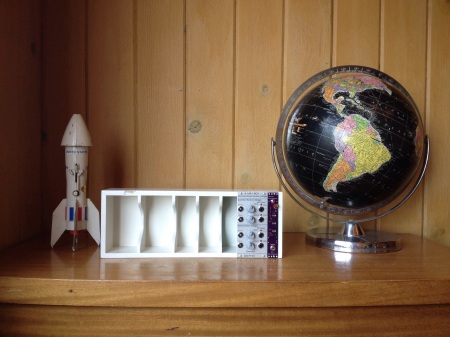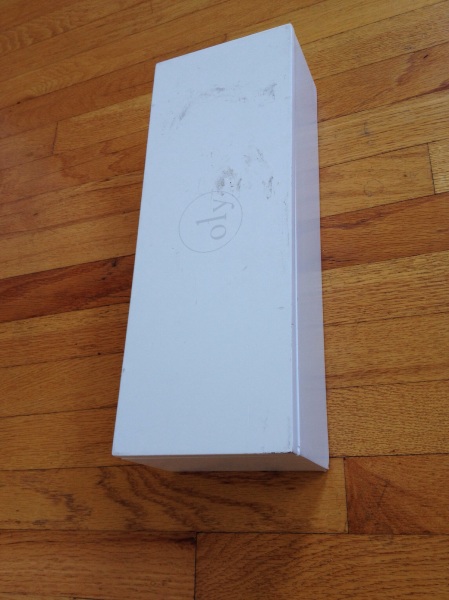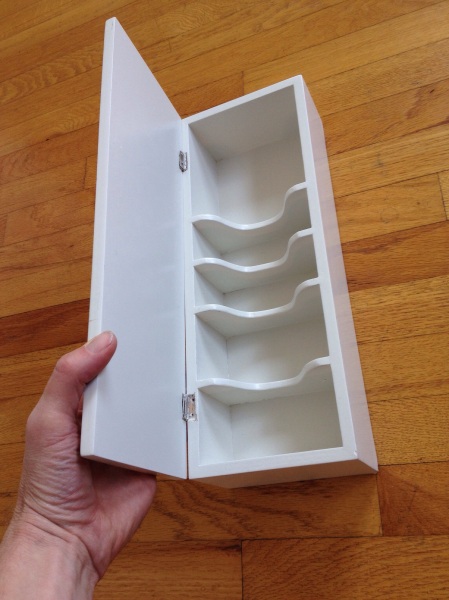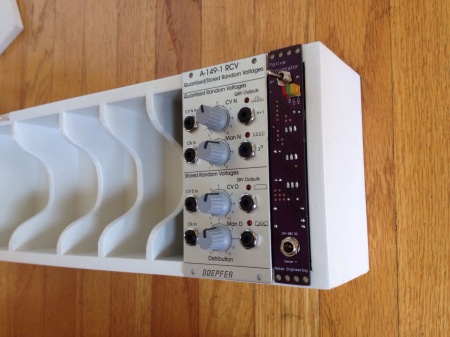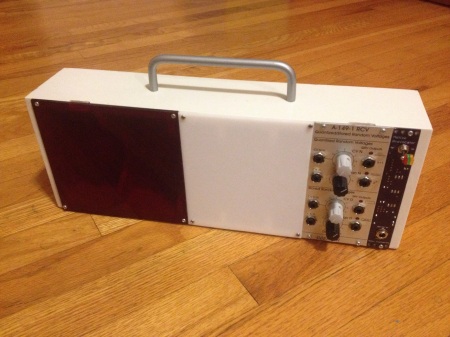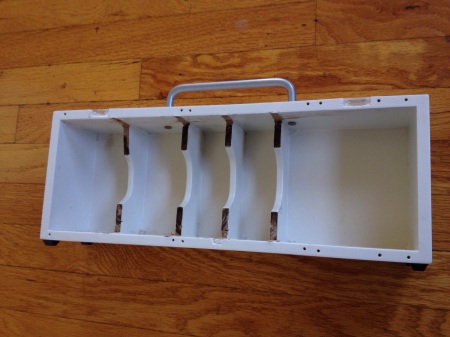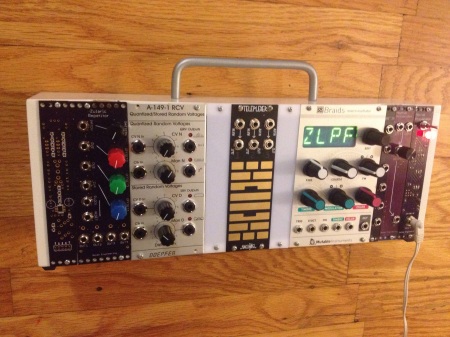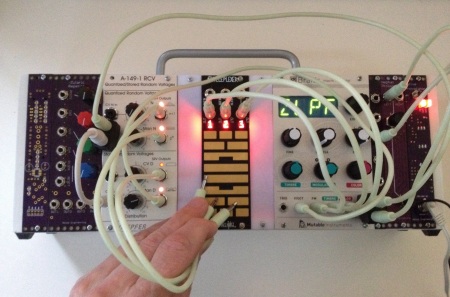In an attempt to abate my lust for the impossible to find Buchla Music Easel* or the insanely expensive EMS Synthi, I’ve put together a modular synthesizer using a slim vintage Samsonite briefcase as the housing.

It sits nicely on a laptop stand, a keyboard stand or my lap.

The space above the modules holds the wall wart power supply, the cables, and a bag of adapters when packed up. I may eventually add small speakers up in each corner like the Synthi has. The handle makes a nice cable holder when in use.

I went with eurorack modules to compliment my other modular system. Tiptop Audio 84hp rails fit almost perfectly into the case; I just had to file the ends to fit the contours of the case better. So far it has a Flight of Harmony Choices joystick, a Make Noise DPO, a Make Noise Optomix, a Random Sequencer Turing Machine, a Noise Engineering Ataraxic Translatron (an amazing prototype module from a genius friend of mine I am beta testing – next to that is an empty board from a different prototype), a custom plate with a square wave LFO to run the Random Sequencer and a mono-to-stereo converter with attenuation for output, Tiptop Audio uZeus power and lastly a custom plate with a force sensing resistor and ribbon controller. It is a fun stand-alone unit but also compliments my main system nicely.

The ribbon plate was built with help from friends. I made a template of the layout and Stexe from Slithis made the support beams, cut the plate and made the holes for me in his fabrication laboratory.


The schematic was laid out by my electronics mentor and the same guy who created the Ataraxic Translatron in my case, Stephen McCaul. First I added wires to the sensors, jacks and pots on the plate.

Then I did all the rest of the circuit by gluing the chips to a plastic piece and adding the components like a little electronic sculpture.

Then I wired it all together and was amazed that it all worked on the first try.

The plate is laid out like this: the force sensor has a scalable CV output and a gate out with a threshold pot. The ribbon has a scalable CV output and the two red buttons add positive bias and the black add negative bias to the ribbon output, so they can be used to jump up in pitch or jump down in pitch. The bias buttons each have a trim pot on the board so they can be calibrated as desired. There is also a gate out from the ribbon with a pot for the threshold. The ribbon works best for me when scaled to two octaves. And with various buttons engaged I can go up an octave or down an octave, giving me a four octave range. I mainly use it with the ribbon output to the DPO 1v/oct input and the force sensor output to the Optomix cv input.
Here is a test flight of the ribbon controller as I get a feel for the ribbon and using the bias buttons:

Next time you see a guy with a briefcase it might not be what you think.

*Buchla expert Mark Verbos told me at a Trash Audio event that plenty of other Buchla modules can do what the each of the functions of the Music Easel does but even better, but that system in that case still has for me what Captain Beefheart called “cootie appeal”; it’s too cute to not want one.
